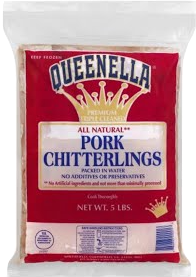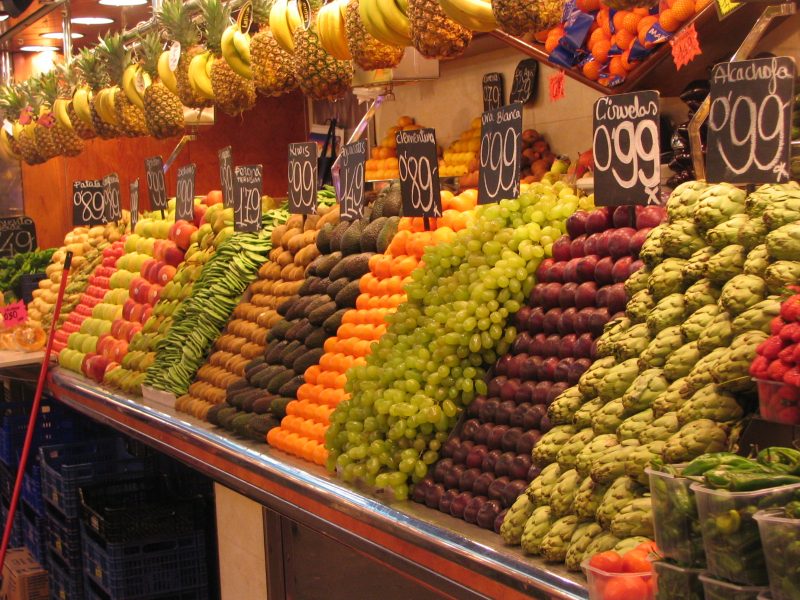Chitterlings Are Edible Intestines Of Pigs

Chitterlings Are Edible Intestines Of Pigs
Chitterlings, also known as chitlins, are the edible intestines of pigs. They are a traditional dish in many cultures. Chitterlings have been consumed for centuries, especially in African-American, Southern, and soul food traditions. Despite their humble beginnings, they have become an integral part of various culinary landscapes. In recent years, they have gained popularity in different parts of the world.
The origin and history of chitterlings
Chitterlings have a long and rich history. They originated as a food source for those who had limited access to high-quality cuts of meat. Historically, they were eaten by enslaved people in the United States as part of their diet. Enslaved individuals were often given the less desirable parts of animals to eat. However, chitterlings soon became a flavourful dish with cultural significance.
Cultural significance of chitterlings
Chitterlings hold cultural significance in African-American and Southern cuisine. The dish is often prepared during holidays and special occasions. In African-American communities, chitterlings are a symbol of resilience and resourcefulness. Preparing and serving chitterlings became an important tradition passed down through generations. Their significance extends beyond food, representing community and heritage.
Southern cuisine
In Southern cuisine, chitterlings are a beloved comfort food. The preparation of chitterlings is often a communal activity. Families gather to clean, cook, and enjoy them together. They are usually paired with other classic Southern dishes like cornbread, collard greens, and fried chicken. In many Southern households, chitterlings are prepared during Thanksgiving, Christmas, and New Year’s celebrations.
Preparation process
Cleaning chitterlings is an essential step in preparing them. This process involves thoroughly washing the intestines to remove impurities. The cleaning process can be time-consuming, but it is crucial for ensuring that the chitterlings are safe to eat. Once cleaned, the chitterlings are usually boiled or fried. Seasoning is often added to enhance the flavor, with ingredients like onions, garlic, and vinegar commonly used.
Health considerations
Chitterlings are a rich source of protein, but they should be eaten in moderation. As an organ meat, they are high in cholesterol and fat. It is important to clean chitterlings thoroughly to reduce the risk of contamination. Improper cleaning can lead to foodborne illnesses. When prepared properly, however, chitterlings can be a flavourful and satisfying dish.
Culinary traditions
Chitterlings are not only enjoyed in the Southern United States. They are also popular in other parts of the world. In countries like China, Korea, and the Philippines, chitterlings are often included in traditional dishes. In these cultures, chitterlings are commonly cooked with spices, soy sauce, and other seasonings to enhance their flavor. Despite the differences in preparation, the concept of eating chitterlings remains common across various cuisines.
Global variations
Around the world, many cultures have their own versions of chitterlings. In the Philippines, chitterlings are known as “betamax,” and they are often grilled and served as a street food. In China, chitterlings are typically stir-fried with vegetables and seasonings. Korean cuisine includes chitterlings in spicy stews and soups. These global variations demonstrate the adaptability and widespread appeal of chitterlings in different food cultures.
Cooking methods
There are many ways to cook chitterlings, with each method bringing out different flavors. Boiling is one of the most common methods. The chitterlings are simmered in water, often with vinegar and seasoning, for a long period to tenderize them. Frying is another popular method, which gives chitterlings a crispy texture. Grilled chitterlings are also a popular option, especially in cultures where grilling is common.
Soul food
In soul food cuisine, chitterlings hold a special place. They are often served as a dish alongside other soul food staples. The preparation of chitterlings is a tradition that has been passed down through generations. Many soul food recipes call for chitterlings to be seasoned with bold flavors like hot sauce, pepper, and garlic. This flavourful dish is a central part of the soul food experience, particularly during family gatherings.
Popularity
Chitterlings have maintained a strong presence in the United States, especially in the Southern regions. While they may not be as commonly eaten today as in the past, they are still beloved by many. The dish is often associated with special occasions, particularly in African-American and Southern communities. Chitterlings are frequently featured in restaurants that specialize in Southern or soul food. Their continued popularity highlights their cultural and culinary significance.
African-American history
Chitterlings are deeply connected to African-American history. Enslaved Africans in the United States were often given the undesirable parts of animals to eat. These parts included offal, such as chitterlings, which were later turned into flavorful dishes. Over time, chitterlings became a symbol of survival and resourcefulness. Today, they continue to be a part of African-American culinary traditions.
Process of cleaning chitterlings
Cleaning chitterlings is an important part of their preparation. The intestines must be thoroughly washed to ensure they are free of dirt and contaminants. This cleaning process can take hours, as the chitterlings need to be scrubbed and rinsed multiple times. Many people choose to buy pre-cleaned chitterlings to save time. However, for those who want to ensure proper cleaning, the process is an essential part of cooking.
Festive and holiday dishes
Chitterlings are often associated with festive occasions. In many households, they are prepared for holidays such as Thanksgiving, Christmas, and New Year’s Day. The dish is typically served with other celebratory foods, such as ham, turkey, and cornbread. In these settings, chitterlings are more than just a meal; they represent tradition, family, and cultural heritage.
Connection to community
Preparing chitterlings is often a communal activity. Family members come together to clean, cook, and share the dish. This bonding experience is an integral part of the tradition of eating chitterlings. The dish brings people together, fostering a sense of community and connection. The communal aspect of preparing chitterlings helps to preserve cultural practices and strengthen family ties.
Modern-day cuisine
In modern cuisine, chitterlings are making a comeback in certain culinary circles. As interest in traditional foods increases, chitterlings have gained recognition for their unique flavor and cultural significance. Chefs are incorporating chitterlings into modern dishes, often with a creative twist. In some restaurants, chitterlings are featured in gourmet recipes, demonstrating how this humble dish can be elevated to new heights.
Sustainability
Chitterlings contribute to food sustainability by utilizing parts of the animal that might otherwise be discarded. By eating chitterlings, people help reduce food waste and make the most of available resources. As more people embrace sustainable eating practices, dishes like chitterlings are gaining recognition for their environmental benefits. This shift towards sustainable eating practices helps reduce the environmental impact of food production.
International cuisines
Chitterlings are featured in many international cuisines, particularly in Asia. In countries like China, Korea, and the Philippines, they are often included in traditional dishes. In these cultures, chitterlings are cooked with a variety of spices, herbs, and seasonings. Their versatility and flavor make them a popular ingredient in many savory dishes. Chitterlings have become a global food item, enjoyed in various forms across the world.
Culinary tradition
Chitterlings have become a symbol of culinary tradition, representing both history and culture. For many, they are a reminder of ancestral practices and the resourcefulness of early generations. Today, chitterlings continue to be an important part of food culture, especially in Southern and African-American communities. As their popularity grows, chitterlings are being embraced by new generations, ensuring that this traditional dish remains relevant in the modern world.
New chapter
Chitterlings are making a comeback in modern culinary trends. As the world embraces food sustainability and traditional cooking methods, chitterlings are regaining recognition. This once humble dish now enjoys a renewed interest in both home kitchens and professional restaurants. Chefs and food enthusiasts continue to experiment with new ways to prepare and serve chitterlings. The future of chitterlings looks promising, with this flavorful and culturally rich dish finding a place in contemporary kitchens worldwide.



